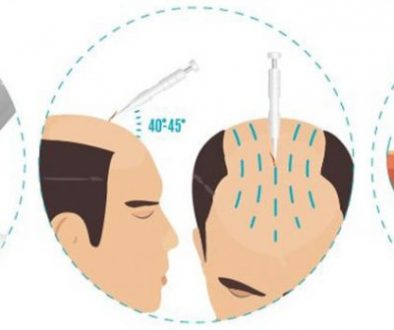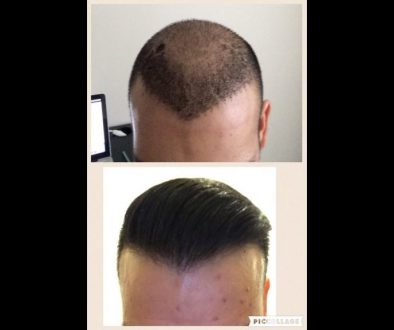Hair Multiplication or “Hair Cloning:” An Update on Where are We Today
The following is an excerpt from the “Official Hair Loss Breakthrough and Future Treatments” thread on our Hair Restoration Discussion Forums:
 Hair multiplication or hair cloning is, essentially, the “holy grail” of hair restoration treatment. The theory behind hair multiplication is simple: remove the crucial stem cells from hair follicles, culture (“clone” or “multiply”) these cells in a lab, and either inject the cells back into the scalp or allow them to create new follicles (cell aggregates) and implant them into the scalp. This creates thousands of new follicles from a very small amount of donor tissue and allows for complete restoration in patients with high Norwood balding patterns. Unfortunately, the actual science behind the procedure initially proved much more difficult.
Hair multiplication or hair cloning is, essentially, the “holy grail” of hair restoration treatment. The theory behind hair multiplication is simple: remove the crucial stem cells from hair follicles, culture (“clone” or “multiply”) these cells in a lab, and either inject the cells back into the scalp or allow them to create new follicles (cell aggregates) and implant them into the scalp. This creates thousands of new follicles from a very small amount of donor tissue and allows for complete restoration in patients with high Norwood balding patterns. Unfortunately, the actual science behind the procedure initially proved much more difficult.
Researchers quickly realized there are two crucial regions of stem cell activity in hair follicles: the “bulge” stem cell follicles, which are epithelial (ectodermal) in origin and found in the outer root sheath (ORS) of the follicle; and the dermal papilla cells, which are mesodermal in origin and found in the bottom of the hair follicle. Eventually, researchers found a reliable way to multiply the epithelial bulge stem cells. However, multiplying the dermal papilla cells proved much more challenging.
Research groups tried – for years – to multiple these cells. These groups extracted the cells and tried to culture them in a traditional flat, two-dimensional cell medium. They found that the cells consistently failed to appropriately multiply. A few teams were able to multiply the cells, but quickly discovered that these dermal papilla clones lacked the ability to mimic normal follicle function and grow hair.
Fortunately, this all changed in 2013 when hair follicle research Dr. Colin Jahoda made a crucial discovery: Jahoda realized dermal papilla cells are naturally cultivated and function in a spherical, three-dimensional environment. By culturing (“cloning” or “multiplying”) dermal papilla cells in a 3-D model, the cells appropriately multiplied and retained the genetic ability to function and grow “pseudo hairs.” Dr. Jahoda took his work to Columbia University and replicated his experiment with fellow hair loss researcher Dr. Angela Christiano in late 2013. Jahoda and Christiano cultured the dermal papilla cells in a “hanging droplet” 3-D format and found that the cells retained 22% of the genetic material of natural dermal papilla cells and possessed the ability to grow colorless, wiry pseudo-hair. This 3-D culturing method proved to be a huge breakthrough and is now an integral part of all hair multiplication studies.While 3-D culturing solved a huge piece of the hair multiplication puzzle, Dr. Jahoda himself admitted that there was still much to understand and the method was not yet ready for human testing.
However, this did not stop several groups from integrating the 3-D culturing method and working toward a true hair loss treatment. In particular, two groups – one in China and one in Taiwan – are now using Dr. Jahoda’s method to advance the process of hair multiplication. A research group at the National Taiwan University Hospital is actively seeking 400 research participants for a new experiment where dermal papilla cells grown using Jahoda’s 3-D method are inserted into the subject’s scalps. This will be the first time dermal papilla cells cultured in the 3-D model have been injected into the scalps of living humans. The other group, working at the Southern Medical University in China, used a 3-D culturing model called the “Matrigel Culturing Method” to culture cells and found that combining these cells with hair matrix cells resulted in the growth of a hair-like fiber. The cells grown with this model retained important genetic characteristics (which may be greater than the 22% seen by Jahoda and Christiano), and this shows that Matrigel culturing may be a reliable method for hair multiplication in the near future.
These two groups are not the only ones currently researching with the 3-D growth model. In May 2014, the 8th annual World Congress for Hair Research will take place in Korea, and at least 6 additional researchers are presenting the results of their 3-D culturing studies during the meeting.
While the recent hair multiplication findings are very exciting, an actual treatment using these new methods is likely still far away. First, no group has yet grown normal hair with the modern hair multiplication methods. Several groups have succeeded in growing “hair-like” structures or “pseudo hairs,” but not “real hair.” Many believe this problem could be partially solved by cloning and integrating the oil-secreting sebaceous gland (which is an integral part of the pilo-sebaceous model of the hair follicle). What’s more, when a model of easily reproducible hair multiplication is discovered, it still must pass all clinical safety and efficacy trials. Because the process involves the culturing of stem cells (and the use of growth factors to make these cells divide and multiply quickly), it possess the potential for unregulated or abnormal cell growth (i.e. cancer) and must be thoroughly evaluated. Finally, it is likely that this process will be very expensive in the beginning and it would take some time before it was affordable to the average hair loss sufferer.
Altogether, hair multiplication is a promising therapy. Several recent breakthroughs have also greatly accelerated hair multiplication research and could make it a realistic treatment in the distant future. Unfortunately, the several missing pieces of the hair multiplication puzzle and the approval process make the timeline uncertain. Please check back for more hair multiplication updates in the future!
____________
Blake Bloxham – formerly “Future_HT_Doc”
Editorial Assistant and Forum Co-Moderator for the Hair Transplant Network, the Hair Loss Learning
Center, the Hair Loss Q&A Blog, and the Hair Restoration Forum
Follow our community on Twitter
Watch hair transplant videos on YouTube
Technorati Tags: Hair Loss Breakthrough, Future Treatments, Hair multiplication, hair cloning, hair restoration, stem cells, Colin Jahoda, Angela Christiano, National Taiwan University Hospital, dermal papilla



